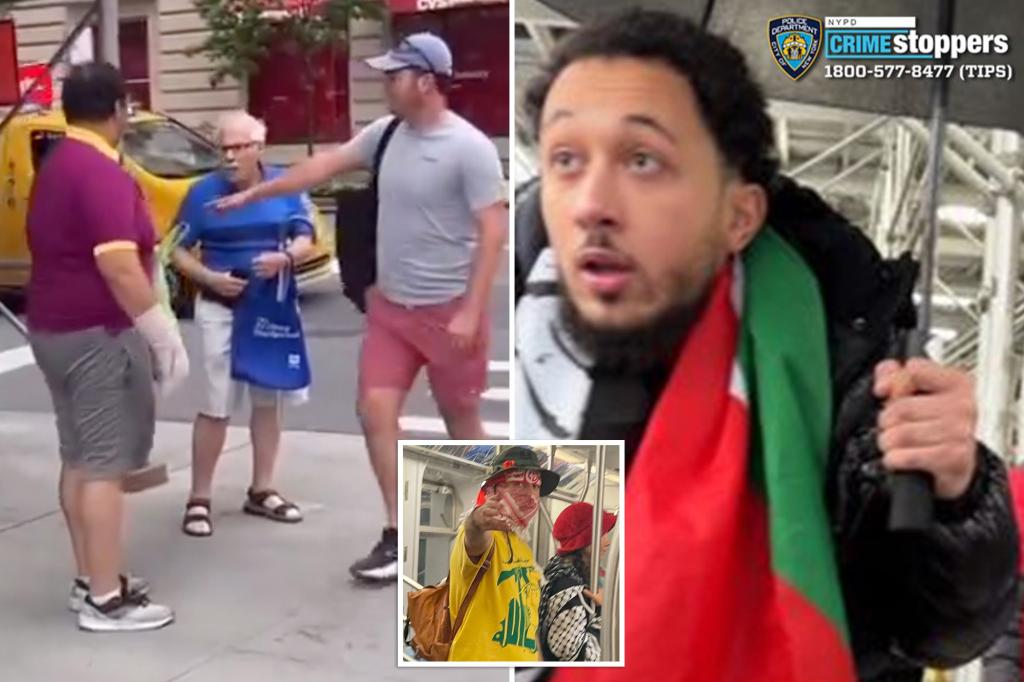The year 2024 witnessed a disturbing surge in antisemitic hate crimes in New York City, painting a stark picture of vulnerability and fear within the Jewish community. The NYPD reported a staggering 345 anti-Jewish incidents, representing a 7% increase from the previous year and accounting for a shocking 54% of all reported hate crimes. This alarming statistic signifies that Jews were targeted more than all other minority groups combined, highlighting a deeply concerning trend of antisemitism amidst escalating global tensions and local unrest. The backdrop of the Israel-Hamas war and fervent pro-Palestinian protests within the city seemed to exacerbate existing prejudices, contributing to a climate of hostility and violence. The data underscores a chilling reality for Jewish residents: they are disproportionately bearing the brunt of hate-fueled attacks in a city renowned for its diversity and inclusivity. This surge in antisemitism raises fundamental questions about safety, tolerance, and the efficacy of measures aimed at combating hate-motivated violence.
The personal accounts of victims, like Jonathan Lederer, a 23-year-old Jewish student at Columbia University, provide a poignant human dimension to these statistics. Lederer’s experience serves as a stark reminder of the tangible impact of hate crimes, moving beyond mere numbers to reveal the fear and trauma inflicted upon individuals. Attacked twice in 2024, most notably in December by an anti-Israel protester, Lederer expresses his fear and shock at the level of antisemitism he encountered. His testimony underscores the urgent need for increased protection and proactive measures to address the root causes of this hatred. The escalating hostility faced by Jewish individuals, exemplified by Lederer’s experience, demands immediate attention and concerted efforts to ensure their safety and security within the city.
While overall reported hate crimes saw a marginal decrease of 4% in 2024, the dramatic rise in antisemitic incidents stands out as a deeply troubling anomaly. This paradox, a decrease in overall hate crimes alongside a significant spike in anti-Jewish attacks, suggests a distinct and targeted animosity towards the Jewish community. While the decline in overall incidents might offer a glimmer of hope, it is overshadowed by the alarming reality that antisemitism remains a pervasive and escalating threat. The data highlights the need for targeted interventions and community-specific strategies to combat the distinct challenges posed by anti-Jewish hatred, even as broader efforts to address hate crimes continue.
The surge in anti-Muslim hate crimes, a 65% increase from the previous year, further complicates the landscape of hate-motivated violence in New York City. This increase, though alarming in itself, should not diminish the distinct and disproportionate targeting of the Jewish community. The simultaneous rise in antisemitism and anti-Muslim sentiment underscores the interconnected nature of prejudice and the need for comprehensive strategies that address all forms of hate. While acknowledging the suffering of other minority groups, it’s crucial to maintain focus on the alarming trend of antisemitic attacks, which represent the majority of hate crimes in the city. A holistic approach to combating hate, encompassing all targeted communities, is crucial for fostering a safe and inclusive environment for everyone.
The political discourse surrounding the rise in antisemitism adds another layer of complexity to the issue. Victims like Lederer point to perceived inaction by the Biden administration as a contributing factor to the escalating violence, arguing that a stronger stance against antisemitism and the deportation of foreign students supporting terrorism would have deterred such acts. This criticism reflects a broader debate about the government’s role in combating hate crimes and the effectiveness of current policies. While opinions differ on the specific measures needed, there is a consensus on the urgency of the situation and the need for more robust action to protect vulnerable communities.
Bronx Representative Ritchie Torres echoes this sentiment, criticizing the state of New York for failing to adequately protect its Jewish residents. Torres’ statement highlights the stark disproportionality of hate crime victimhood, with Jewish New Yorkers representing 12% of the population but accounting for over 50% of hate crime victims. This disparity underscores the urgent need for targeted interventions and resources specifically designed to address the unique challenges facing the Jewish community. Torres’ call for greater protection reflects a growing demand for accountability and action from both state and federal authorities to address the escalating crisis of antisemitic violence. The ongoing debate underscores the complex and multifaceted nature of combatting hate crimes and the need for collaborative efforts involving government agencies, community organizations, and individuals to create a more just and tolerant society.










